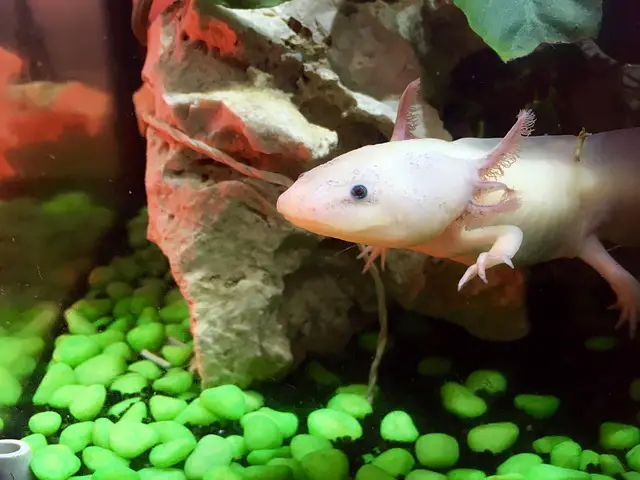Axolotls are some of the most popular aquarium pets around. They’re easy to care for and make a great first pet for newcomers to the hobby, but they can also be susceptible to certain diseases. One of these is Ichthyophthirius, more commonly known as ICH or “white spot disease.” This blog post will discuss ICH and how it affects axolotls specifically.
Can an axolotl get ICH?
An axolotl can get ICH (Ichtyophthirius multifiliis), also known as white spot disease.
This is a common freshwater fish parasite found all over the world. While it is generally attributed to tropical fish, axolotls are just as susceptible to this parasite.
It spreads quickly and may cause lethargy, loss of appetite, or even a cloudy appearance on the fish. In more severe cases, patches of parasites will appear on the gills and fins of the axolotl.
Fortunately, if detected early and appropriately medicated, ICH can be treated with various medications and prevented from spreading to other aquarium inhabitants.
As such, owners need to know what signs could signify this infection and look out for any suspicious changes in their pet’s behavior or physical appearance.
What is ICH?
ICH is an infection caused by a parasitic protozoan called Ichthyophthirius multifiliis.
This parasite primarily attacks the skin and gills of fish, but it can also affect amphibians like axolotls. It is one of the most common diseases in freshwater aquariums, particularly those with poor water quality or overcrowding issues.
The parasite attaches itself to the host fish or amphibian’s skin and gills, causing irritation and damaging these delicate tissues.
Signs & Symptoms of ICH in Axolotls
The most common symptom of ICH in axolotls is white spots on their bodies or fins, hence its nickname, “white spot disease.”
These spots are cysts filled with parasites attached to the axolotl’s skin and gills.
Other signs include excessive scratching or rubbing against objects in the tank, breathing problems due to gill damage from the parasites, lethargy, loss of appetite, pale coloring due to blood loss from damaged gills, and cloudy eyes due to inflammation caused by the parasites.
As with any other illness in fish or amphibians, if left untreated, it can lead to death due to organ failure or secondary infections from weakened immune systems.
Treatment Options for Axolotls with ICH
The good news is that there are treatments available for axolotls infected with ICH.
- The first step is to perform regular water changes using treated water to maintain good water quality and reduce stress on your pet.
- You should also increase aeration in the tank using an air pump or bubbler and raise the temperature slightly (by 1-2°F) since elevated temperatures have been shown to help speed up recovery from this type of infection.
- Finally, it would be best to use a chemical treatment such as copper sulfate or potassium permanganate according to package instructions; these medications will kill off any parasites on your axolotl’s body and prevent future infections.
If you follow all of these steps, you should be able to successfully treat your pet’s ICH infection without any significant complications.
Conclusion
Although ICH can be severe if left untreated, it is easily prevented with proper tank maintenance and treatment when necessary. Regular water changes are vital for avoiding this disease; however, if you find yourself dealing with an infected axolotl, following our advice above should help get your pet back on track toward health and happiness.
Be sure to check out our other blog posts for more information about keeping your aquarium clean and healthy so that you never have to worry about dealing with this pesky disease again.




